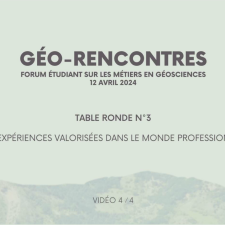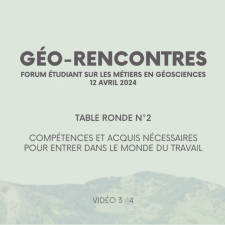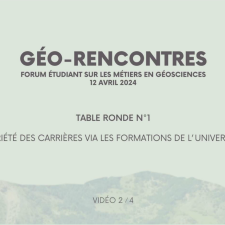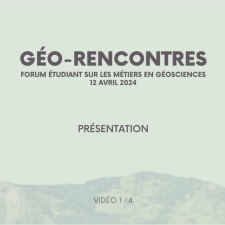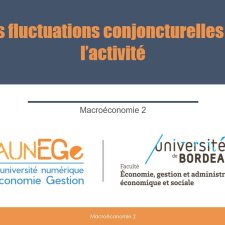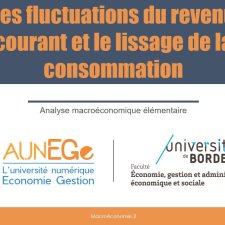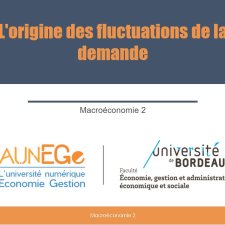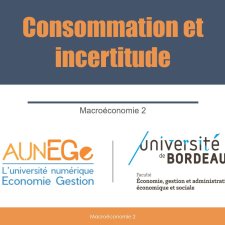Chapitres
Notice
Present-Day Geomorphological Changes in Polar Regions
- document 1 document 2 document 3
- niveau 1 niveau 2 niveau 3
Descriptif
The landscape uniqueness of polar zone manifests itself in morphological traces of older glaciations and marine transgressions, areas of present-day glaciations, multi-year permafrost, multi-year snow covers, deglaciation processes variable in time and space and resulting in an expansion of ice-free 94 areas, multi-directional geosuccession, and finally in the various responses of the Arctic peoples to landscape changes and the growing human impact. The abrupt landscape changes taking place over a period shorter than the life span of a single generation can be due to a wide variety of natural causes, whether endogenous or exogenous, or to the increasing, multi-directed human activity. At present, however, their principal cause is believed to be climate change at a variety of spatial scales. The paper presents examples of contemporary changes of morphologic surfaces from all the territory of the Arctic and Antarctica. Among the most significant environmental changes noted in the polar regions, can be list the following:
• air temperatures frequently exceeding the hitherto absolute maxima,
• an increase in annual precipitation totals, first of all in the form of rain, also during the cold period,
• cold periods becoming milder and shorter,
• transitional periods becoming longer: spring coming earlier and autumn ending later,
• a decrease in the thickness, persistence and area of the sea-ice cover,
• an increase in the number of icebergs from intensively calving glaciers,
• an increase in the temperature and a decrease in the salinity and density of ocean waters; changes in the thermohaline circulation,
• an increase in the level of the world ocean,
• intense ablation and rapid recession of the majority of polar glaciers,
• a decrease in the area of nival covers,
• intensive thawing of multi-year permafrost, mainly in continental parts,
• changes in the water cycle manifested by an increase in the surface runoff in streams and a shortening of the period of freezing of streams and lakes,
• an increase in the area of some wetlands and a decrease in others,
• a northward shift of geoecological, including vegetation, zones,
• changes in the carbon cycle in the geoecosystems manifesting themselves in an increase in biogenic carbon dioxide and methane, and
• an increase in the frequency and magnitude of forest fires.
All those symptoms of climate change affect the terrestrial geoecosystems of polar regions to a greater or lesser degree. The ever-growing role of rock geoecosystems, crucially dependent on glacier and nival geoecosystems, results from intensive glacier recession and the melting of permafrost and snow covers. The polar research to date and scenarios of development of polar regions indicate that the polar landscapes have been undergoing rapid changes recently.
Intervention / Responsable scientifique
Dans la même collection
-
The Start and the End of Our Interglacial
BergerA.The previous interglacial (Marine isotope stage 5e, peaking at 125 kyr BP) is usually assumed to be a good analogue for our present-day climate. Moreover, as our present interglacial, the Holocene, is
-
Cross-Disciplinary International Research on Land-Atmosphere Interactions
ReissellAnniThe presentation will focus on scientific issues of importance to global change and climate change research: interactions of reactive trace and greenhouse gases between the biosphere and atmosphere in
-
Regional Climate Change and Extremes
DéquéMichelGlobal coupled ocean-atmosphere models, driven by greenhouse gas concentrations according to several hypotheses for the next century, have been used in the last IPCC-AR4 report to depict possible
-
Recent Trends and Vulnerabilities in the Carbon Cycle
CiaisPhilippeWe shall address the coupling between atmospheric circulation and the modelling of ecosystems, to have a better understanding of the carbon cycle, perturbed both by land use and Climate Change. The
-
Post-2012 options to Reduce Greenhouse Gas Emissions
DuvalRomainThe presentation will focus on post-2012 options to reduce greenhouse gas (GHG) emissions, putting special emphasis on the need to abate world emissions. The presentation will focus on post-2012
-
The Intergenerational Equity: A Concept to Build for Sustainability, the Case of Global Warning
DjédjéOkoubi Franck DidierDefined as “the relation that each generation has with the last or future generations in the use... of the natural or cultural resources of planet”, Intergeneration equity (here I.E) imposes rules of
-
Round Table
JoussaumeSylvieChanzyAndréSomervilleRichardDuvalRomainThe European Science Foundation (ESF) and the French Foundation of the Maison des Sciences de l’Homme (FMSH) (within the Entre-Sciences programme) have agreed to jointly develop a new conference
-
Comparison of Simulated Tree-Ring Cellulose d180 at the European Scale
DanisPierre-AlainIn order to investigate factors involved in the inter-annual variability of d180 in tree ring cellulose (d18OTRC), we simulated the d18OTRC from 1960 to 2001 over Europe. We used 1) simulated climate
-
Borehole Climatology and Model Simulations: Steps to Integrated Assessment
Gonzales RoucoJesus FelipeProgress in understanding climate variability through the last millennium leans on simulation and reconstruction efforts. Exercises blending both approaches present a great potential for answering
-
Food demand, Productivity Growth and the Spatial Distribution of Land and Water use: A Global Model…
PoppAlexanderNowadays, human society appropriates about one quarter of total net primary production of the terrestrial biosphere. Production of food, energy and materials, and the related use of land and water
-
Turning Hazards into Ressources? Climate Change, Floods and Coastal Wetlands in the Costa Brava (No…
Serra-LlobetAnnaAccording to the IPCC Fourth Assessment, one of the most vulnerable areas in Europe are coastal zones. This is due to sea level rise combined with increased risks from storms. Coastal wetlands, in
-
How to Foster the Economic and Societal Technical Solutions?
CallonecGaëlThe presentation will focus on the interplay between economic scenarios (based on energy demand and CO2 emission reduction) with long run-public policies. The French case will be discussed in more
Sur le même thème
-
Géo-Rencontres 2024 / Les expériences valorisées dans le monde professionnel
LilloEmmaAraujoJulieHuartFlorianDubreuRomainBuquetDamienChazalLauraBorieMarianeForum sur les métiers en géosciences organisé par les étudiants du CMI Ingénierie Géologique et Civile, Université de Bordeaux, 12 avril 2024
-
Géo-Rencontres 2024 / Compétences et acquis nécessaires pour entrer dans le monde du travail
BrinonJulietteAmoleFili-FenuaPretouFrédéricCampetHugoLiébauxAlbinDe AlemeidaMarie-LouPoirierAymericDufrenoyAudreyForum sur les métiers en géosciences organisé par les étudiants du CMI Ingénierie Géologique et Civile, Université de Bordeaux, 12 avril 2024
-
Géo-Rencontres 2024 / Variété des carrières via les formations de l'université
InguimbertDianeLacazeRomaneLemaitreLaurieChazalLauraMontjeanPascalPoudevigneJacquesPortefaixFrédéricForum sur les métiers en géosciences organisé par les étudiants du CMI Ingénierie Géologique et Civile, Université de Bordeaux, 12 avril 2024
-
Géo-Rencontres 2024 / Présentation
LatasteJean-FrançoisLavieThéoForum sur les métiers en géosciences organisé par les étudiants du CMI Ingénierie Géologique et Civile, Université de Bordeaux, 12 avril 2024
-
Tokyo, plus grande « ville » au monde : aménager et gouverner la démesure
Languillon-AusselRaphaëlAvec ses quelques trente-cinq millions d’habitants, Tokyo est la « ville » la plus peuplée au monde, et l’une des métropoles les plus riches. Cette présentation vise à décrire, analyser et expliquer,
-
Les fluctuations conjoncturelles de l’activité
Maveyraud-TricoireSamuelLes fluctuations conjoncturelles de l’activité
-
Les fluctuations du revenu courant et le lissage de la consommation
Maveyraud-TricoireSamuelLes fluctuations du revenu courant et le lissage de la consommation
-
L'origine des fluctuations de la demande
Maveyraud-TricoireSamuelL'origine des fluctuations de la demande
-
L'approche par la dépense du PIB et les grandes fonctions macroéconomiques
Maveyraud-TricoireSamuelL'approche par la dépense du PIB et les grandes fonctions macroéconomiques
-
-
-



